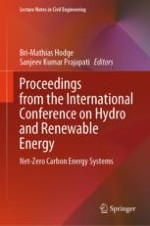2024 | OriginalPaper | Chapter
Thermal Energy Mapping for Net-Zero Carbon Emission
Authors : Sheetal Shinkhede, Sanskriti Mujumdar
Published in: Proceedings from the International Conference on Hydro and Renewable Energy
Publisher: Springer Nature Singapore
Activate our intelligent search to find suitable subject content or patents.
Select sections of text to find matching patents with Artificial Intelligence. powered by
Select sections of text to find additional relevant content using AI-assisted search. powered by
